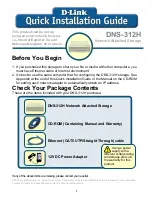
Storage migrations made simple.
Page 6
IT organizations face many challenges associated with technology refresh—
particularly deciding how to deal with data growth and determining how,
when and where to move data. Some of the key issues associated with technol-
ogy refresh include:
• Lease overlap costs or duplicate maintenance costs, when old and new
equipment are on the data center floor at the same time
• Migration of data between arrays from different vendors, as there may
be significant incompatibilities
• Risk of data loss or corruption that may occur if the migration is not
done properly
• Prolonged application downtime, or even an inability to restart applications.
This paper focuses on how organizations can meet these challenges by leveraging
data migration software.
Data migration software
Depending on the criticality of applications, the quantity of data to be moved
and allowable downtime, there are a variety of tools that organizations can use
to migrate data, each with its own considerations and limitations.
Offline migration methods
Offline migration methods require that applications be taken offline during
data movement, and therefore are suitable only when significant downtime can
be tolerated. While the amount of downtime required typically depends on the
quantity of data being transferred, this offline migration mechanism is not rec-
ommended for heavily used applications or those that must be accessible outside
of normal business hours. Offline migration typically requires manual manipu-
lation of data or files, which can increase the risk of human error and may not
scale to distributed or remote scenarios.
Highlights
Organizations can meet these chal-
lenges by leveraging various types
of data migration software.
It is an ongoing challenge to decide
how to deal with data growth and to
determine how, when and where to
move data.







































